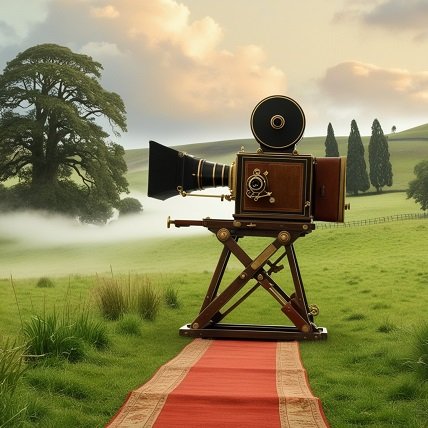Introduction
English picture movies have made a name for itself in the always changing entertainment industry by enthralling viewers with their varied storylines, striking graphics, and unique performances. English picture movies have consistently pushed the frontiers of originality and innovation, from the heyday of Hollywood to the current era of digital streaming. This thorough reference explores the history, development, significance, and potential future developments of English picture movie. Regardless of your level of interest in movies, this blog post will present you insightful knowledge on this intriguing subgenre.
The History of English-language Film
The history of English picture movies, sometimes just called English-language films, dates back to the early years of the motion picture industry. Pioneers such as Thomas Edison and the Lumière brothers started experimenting with motion picture technology in the late 1800s, marking the beginning of the trip. Nonetheless, Hollywood became the center of English-language filmmaking in the early 20th century. Movies like “The Cabinet of Dr. Caligari” (1920) and “The Birth of a Nation” (1915) were silent pictures that paved the way for talkies to appear and for the cinematic golden age.
Hollywood’s Golden Age
Known as the Golden Age of Hollywood, the 1930s and 1940s were characterized by the dominance of large studios, gorgeous performers, and legendary films. English picture films were at their height at this time, producing timeless films like “Casablanca” (1942), “The Wizard of Oz” (1939), and “Gone with the Wind” (1939). During this time, notable filmmakers like Alfred Hitchcock rose to prominence and made a lasting impression on the thriller genre.
The Development of Movie Genres
The range of genres found in English picture films increased with the development of the film industry. Audiences were exposed to novel storytelling approaches and new genres throughout the post-war period. The 1940s and 1950s saw the growth of the counterculture cinema movement, while the 1960s saw the popularity of film noir, with its gloomy and melancholic looks. English-language films now include a broad spectrum of genres, such as science fiction, fantasy, humor, action, and drama, and each one provides an immersive experience for the audience.
Technology’s Effect on Filmmaking
Technological developments have had a big impact on how English picture films are made. Talkies replaced silent films as the dominant form of cinema, and color film added a whole new level of storytelling possibilities. Digital technology has revolutionized the creation and consumption of movies in the last few decades. The filming technique and distribution methods of English language movies have been revolutionized by high-definition cameras, computer-generated imagery, and streaming platforms. This has resulted in increased accessibility for these films.
Famous English Picture Films and Their Impact
A number of English picture films have had a significant influence on popular culture and the film business. Cinematic masterpieces such as “Star Wars” (1977), “Titanic” (1997), and “The Lord of the Rings” trilogy (2001–2003) have redefined narrative techniques, visual effects, and box office performance. In addition to entertaining millions of people, these films served as inspiration for innumerable filmmakers and shaped a number of later cinematic styles.
The Function of Film Festivals in Presenting English Language Motion Pictures
Film festivals are essential for showcasing the best English feature films and giving up-and-coming talent a stage. Film festivals that are renowned for exhibiting avant-garde and provocative films include the Toronto International Film Festival, Sundance Film Festival, and Cannes Film Festival. These events frequently aid in the beginning of performers’ and filmmakers’ careers, advancing the industry’s ongoing development.
Streaming Services’ Ascent
The way English picture movies are seen has changed dramatically with the introduction of streaming services. With a vast movie catalog at their fingertips, streaming services like Netflix, Amazon Prime Video, and Disney+ have completely transformed the film distribution industry. Original material created by these platforms has also become more popular as a result of this change, substantially expanding the selection of options offered to viewers.
Conclusion
Since their inception, English picture movies have seen significant evolution, going from silent films to intricate, visually magnificent works of art. The genre’s rich history, variety of narrative styles, and technological innovations never fail to enthrall spectators. English picture films will surely never stop inspiring and amusing us as the film industry develops, reflecting the dynamic nature of world culture.
FAQ
What are picture movies in English?
English-language films are referred to as English picture movies. They include a broad spectrum of literary genres and styles, such as science fiction, humor, drama, and action. Despite being created all around the world, they are frequently linked to Hollywood.
What was the origin of English picture movies?
English picture films have its roots in the early 20th century, when Hollywood emerged as a significant center of the cinema industry. The first motion pictures were silent, but as sound technology advanced, “talkies” and contemporary cinema were produced.
Which classic English picture films are there?
The films “Gone with the Wind” (1939), “The Wizard of Oz” (1939), “Casablanca” (1942), “Star Wars” (1977), and “The Godfather” (1972) are examples of classic English picture films. These movies have had a long-lasting effect on popular culture and film.

